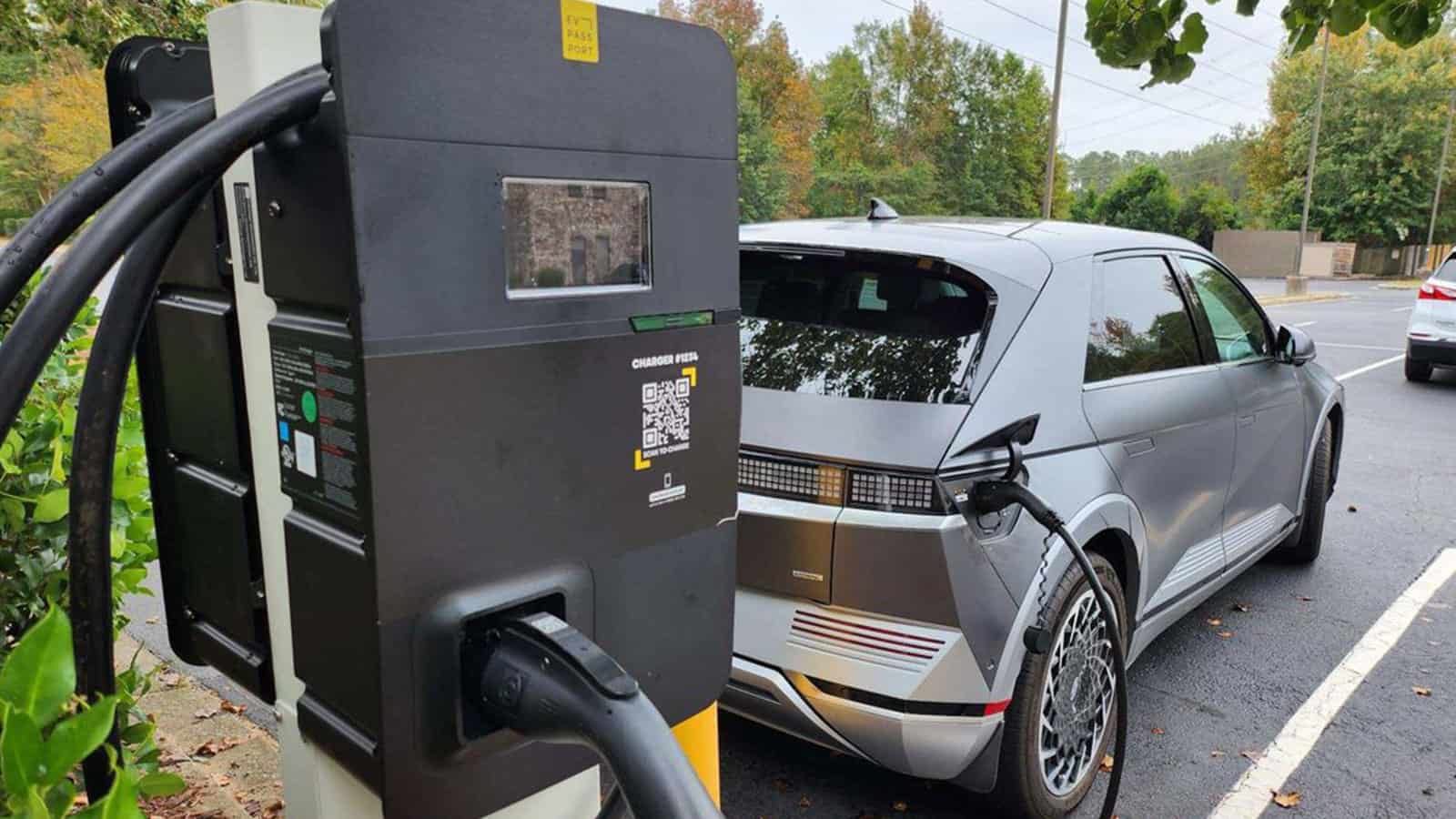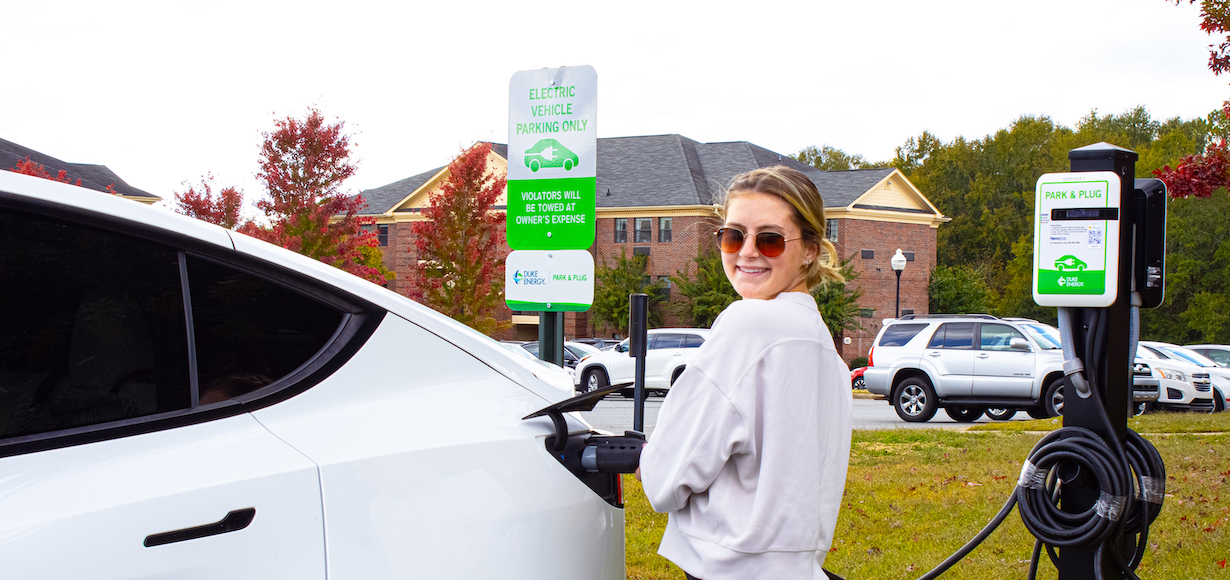How to Stay Updated on Industry Developments When You Buy EV Charging news
How to Stay Updated on Industry Developments When You Buy EV Charging news
Blog Article
Leading EV Charging News: Secret Updates on Framework and Innovation

Current Innovations in Fast-Charging Technology

Additionally, developments in battery modern technology, including boosted thermal management systems and greater energy thickness batteries, enhance fast-charging capabilities. These advancements minimize the risk of battery deterioration throughout rapid charging, guaranteeing durability and performance for EV owners.
Additionally, the combination of smart charging options is enhancing individual experience, making it possible for real-time surveillance and dynamic prices designs. EV Charging news. This adaptability allows chauffeurs to enhance billing costs and times based on grid demand
As automakers proceed to spend in fast-charging networks, the cooperation in between industry stakeholders is important. Collaborations in between billing terminal providers and automobile makers are leading the way for considerable coverage, ultimately fostering a more robust EV community. These developments are essential in supporting the shift to sustainable transportation.
Government Efforts for Charging Growth
Federal government efforts play a critical role in the expansion of electrical vehicle (EV) charging infrastructure, helping with the transition to sustainable transportation. Various government and state programs are being carried out to enhance charging accessibility, reduce the economic problem on consumers, and promote the fostering of electrical automobiles.
Significantly, the U.S. federal government has actually assigned significant funding with the Facilities Investment and Jobs Act, which sets aside $7.5 billion for EV charging network development throughout the nation. This financing is focused on deploying hundreds of new charging terminals, especially in underserved locations, thus addressing array stress and anxiety amongst prospective EV buyers.
In addition, various states are establishing regulations to streamline the allowing process for billing station setups, which is important for accelerating implementation. Incentives such as tax obligation credit scores and discounts for both consumers and services are additionally being presented to motivate the installation of charging infrastructure.
Moreover, public-private collaborations are progressively becoming a focus, leveraging personal financial investment to complement federal government financing. These initiatives highlight a collaborative method essential for developing a reliable and extensive EV billing network, inevitably contributing to a greener and more lasting future.
Cutting-edge Battery Solutions Enhancing Efficiency
Reinventing the landscape of electrical vehicle (EV) innovation, cutting-edge battery solutions are significantly boosting efficiency and performance. Advancements in battery chemistry, especially with lithium-sulfur and solid-state batteries, are causing raised energy density, which permits longer varieties and faster charging times. These new battery kinds have the possible to outmatch traditional lithium-ion batteries by offering higher capacities while minimizing weight, consequently boosting total lorry performance.
In addition, growths in battery monitoring systems (BMS) are maximizing power use and prolonging battery life expectancy. Smart algorithms keep track of battery health and wellness and performance, enabling real-time adjustments to billing and releasing procedures. This not just improves the effectiveness of the battery however also ensures a more lasting and reliable power resource for EVs.
Moreover, the assimilation of reusing innovations is dealing with the environmental influence of battery manufacturing and disposal. Technologies in second-life applications for EV batteries are promoting their usage in energy storage systems, contributing to a round economic situation.
As these ingenious battery options remain to develop, they guarantee to transform the EV market, making look at here electric cars much more easily accessible and attractive to a wider target market while supporting global sustainability objectives.
Partnership In Between Automakers and Charging Networks
Recognizing the essential requirement for a durable billing infrastructure, automakers are significantly collaborating with charging network companies to boost the EV ownership experience (EV Charging news). These collaborations aim to develop a seamless billing ecosystem that profits consumers and supports the transition to electrical automobiles
Significant auto brand names are signing up with pressures with check it out well established charging networks to broaden their charging station coverage, ensuring vehicle drivers have accessibility to trustworthy and practical charging options. For example, collaborations with networks like ChargePoint and Electrify America enable automakers to integrate billing options directly right into their lorries' navigating systems, directing users to the nearest terminals and offering real-time availability updates.
In addition, these partnerships frequently cause the advancement of fast-charging technologies that dramatically minimize the time needed to recharge an EV. By merging resources and proficiency, car manufacturers and charging networks can introduce faster, producing solutions that satisfy the expanding demand for electrical movement.
In enhancement, joint initiatives might additionally result in even more standardized charging methods, which can minimize customer confusion and promote more comprehensive EV adoption. In general, these critical alliances are essential in constructing a straightforward and efficient charging framework that meets the needs of a broadening electrical vehicle market.
Difficulties Encountering EV Charging Infrastructure
As the electric car market proceeds to expand, several challenges are emerging that impede the growth of a comprehensive charging infrastructure. One of the primary obstacles is the not enough variety of billing stations, particularly in country and underserved city locations. This void creates range anxiety among prospective EV buyers, deterring them from making the switch.
Additionally, the absence of standardization in billing innovation complicates the infrastructure landscape. Variants in plug kinds and charging speeds can develop complication for users and increase functional intricacies for charging network drivers.
One more pressing concern is the high expense connected with the installation and maintenance of billing terminals, which can be a barrier for both private companies and public entities. Ultimately, governing obstacles and zoning limitations can postpone the implementation of charging framework, hampering progress in his response increasing crucial services. Resolving these difficulties will certainly be essential for fostering a robust EV environment that supports the shift to lasting transportation.
Conclusion
In verdict, the ongoing developments in EV billing innovation, supported by considerable government efforts and ingenious battery remedies, are essential for the growth and effectiveness of electrical lorry framework. Cooperations in between car manufacturers and billing carriers better enhance station insurance coverage, dealing with the growing need for accessible billing alternatives. Regardless of obstacles that linger within the EV billing landscape, these growths indicate a favorable trajectory in the direction of an extra lasting and effective electric vehicle community.
Developments in charging infrastructure have actually led to the growth of ultra-fast battery chargers capable of delivering up to 350 kW of power, significantly reducing billing times. Variants in plug types and charging rates can develop confusion for users and increase functional complexities for charging network drivers.In final thought, the continuous advancements in EV billing modern technology, supported by significant federal government efforts and ingenious battery options, are essential for the expansion and efficiency of electrical automobile facilities. Partnerships between automakers and billing suppliers better boost station insurance coverage, resolving the growing demand for obtainable charging alternatives. In spite of obstacles that continue within the EV billing landscape, these advancements signify a favorable trajectory towards a much more efficient and sustainable electrical car ecosystem.
Report this page